Janueri (working name) critique
Comments
-
Back again, seeing if my revision has brought Janueri back on track. Done more whole scale revisions than I should have, but it certainly was an intense learning process that I probably had to do. What do you think? Have I recouped some of the personality and addressed some of the wobble/inconsistencies from the first versions?
I've slimmed the top of /a/ and extended /e/'s bottom stroke. Some work done to the /g/. I've added capitals too. I've pushed back the lean towards straight by 5/1000 points and I've thickened the thins by about the same amount. I've brought back the serif and terminals (something I probably shouldn't have taken away) and rounded out the arces, bowl, and general curves. I've kept the proportions of the last revision.
Link to PDF here.
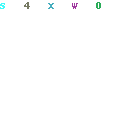
Thanks.0 -
Lucas—good job. Your font has personality and reads well.
Looking forward to the completed release.1 -
I'm afraid those diagonal slices, which your lowercase just gets away with, don't work in the capitals at all to my eye.1
-
I like this.
- I agree the cuts don't yet work for some uppercase letters, e.g. /B, /D.
- I can't see why you shaped the diagonal of /Q that way.
- /J and /r may be too long and wide respectively.
- All vertical serifs look very small compared with the other serifs. Near a dark spot those small serifs (not necessarily vertical) look OK, as in /n, /p, /r, etc. They perhaps only work for stems, and not for thin horizontals. For that reason, I'm convinced the uppercase would profit from longer vertical serifs (/E and /F would also look more interesting with an asymmetrical middle serif).
- Are those ink traps in /b, /h, /q necessary? /d and /p look good to me.
1 -
I realize I may be wrong about the width of /r, because it seems to compensate the gap the slices leave ;-)0
-
Thanks Alex, hope to release soon enough.
Craig and Lex, point taken about the cuts in capitals. Not sure what to do. I'll try making an uppercase set with regular tapering contrasts instead of cuts and see from there. Will post with fixes to vertical serifs and /Q too.
Lex, I put Ink traps on /b, /h, and /q to make the cutting shape similar to /n/m/r, but I am open to changing it. Here is a quick removal of the ink traps, paired with a slightly shortened and thickened /r :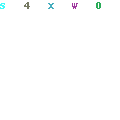
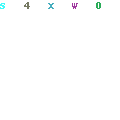 0
0 -
"about the cuts in capitals. Not sure what to do"
One reason the cuts on /D or /B may not be working is that the tapering caused by the cut is as thin as the base of the bowl, causing what looks like a small bump. A possible solution would be to make the bottom thicker to remove any doubt of whether the cut is indeed a cut or something else.1 -
I think this looks great, Lucas. You've definitely restored the engaging personality of the original design, while making it much evener and more harmonious.
I'd like you to consider longer, more substantial serifs. These seem a bit stubby to me. Longer serifs would also help hold a line of text together.
While I don't agree that the diagonal slices on the upper case just plain don't work, I do think they're a little more intrusive there. And the slices on the lowercase /g still seem a bit harsh. Would you consider bowing these straight lines outward, so that they seem straight but are in fact slightly curved? Might help smooth out the abruptness a little.
Yes, please remove the ink traps from /q, /h, and /b. But please make sure the junctures don't get too thin & fragile when you do so.
And I agree that you should narrow the /j.1 -
I might have to take some time to revise the capitals. I think Alexis, you're right, I have to rethink the pre-cut contrast of some glyphs. In the lowercase, underneath the cuts there is a sort of slabserif, something that the pre-cut uppercase is not.
Else, I've shortened the /j by c20 points.
I've lengthened the serifs by some to the left and more to the right. Thickened slightly too to compensate.
I've redrawn the /g.
I've added a small diagonal brace of black to where the ink trap use to be on /b,/h, and /q.
And Max, I've bowed the lines of the cuts outward by about 3x3 points - quite like the result.
Here's a PDF of words.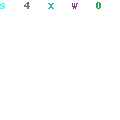 1
1 -
Looking really good. I wonder if the bdpq (and o?) are a touch too wide. The ear of g looks too frail where it connects--visually looks like it will break off. Perhaps g could be a little wider overall too, but I'm less sure about that.1
-
Yes, and /g looks meager overall. Specially its neck is too thin.1
-
This is really coming into focus. Some great revisions. I agree /g is iffy. The eye doesn't fit for me; looks like a perfect circle w/ slices taken out. And it may be too close to the loop; maybe the loop shouldn't be so tall?
Agree that ear of /g is a bit odd.
Looking very nice at text sizes. But I agree w/ Craig about the width of bdpq and g. Don't think the o's too wide, though.1 -
Thanks for all the feedback, I can see each post has been invaluable
I played around with /b,/d,/p, and /q, narrowing their proportions. I could narrow them more?
I spared /o because it's still slightly narrower than /b,/d,/p, and /q.
The /g is fiddly, but I replaced the /t inspired ear and tried an /i derived shape.
I also fixed the /g proportions but I am still unsure. What do you think? I also linked /g's neck.
Here is another PDF of words.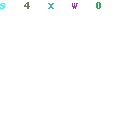 0
0 -
The width of /b, /d, /p, /q is now just as it should be. I also like /g's new ear much better. I still think it needs a bit more weight around the eye, though. The thinner diagonal of /k needs to gain some weight as well. /z's serifs look stumpy to me.1
-
Good changes.
The bowled letters look like they sit too high on the baseline (or conversely the letters with baseline serifs dip too low).1 -
I agree with Craig, the bowls need more overshoot (or the serifs less).
I also agree that the letters have significantly improved in the past couple of days. The upward-turned serifs cause an optical illusion, at least for me: I first thought the baseline had a slight angle, but it really doesn’t. Cool.1 -
Slow update but I managed to revise the contrast and cuts of the uppercase as well as the baseline overshoot.
I shifted the serifs instead of shaping the bowls, seemed easier and not as risky even though it was the long way around. It's at about -5points now. Should I shift them up more?
Else, I fattened up the thinner diagonal of /k by copying /x's diagonal.
I've fattened up /g's eye too.
Added a good length to /z's serifs as well as made it's thins a little more consistent.
With the uppercase, following Alexis' advice a few posts back, I lengthened the vertical serifs and made /E and /F's serifs asymmetrical. How do they feel? Am open to redrawing the capitals totally.
Lots of what has been pointed out has been great. Interesting how you can be blind to something that makes all the difference.
Here's a PDF of words in lowercase and in uppercase.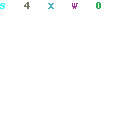 0
0 -
The lowercase is looking great. The serifs could be pushed up a bit more (+2?). I'd restore /e to the first version which hadn't a widening crossbar. Looks better IMO.
The uppercase doesn't convince me yet. Problems I can spot right away are related either to (i) evenness of color or (ii) balance of shape.
To (i):- Top of /G and /C is now too thick, and to a lesser degree also top and bottom of /S.
- I'd try to match the thickness of horizontal strokes (curved and straight) at least optically. That would be my instinct, but it may be omissible.
- Middle serif of /E would look better in an abrupt style IMO, like the horizontal serifs (/I, /K, /G, etc.) .
- /B, /P, /R look unbalanced. Concentrate on getting the counters right and build your stroke around that frame. You did already a great job in /b, /d, /q, /p, etc.
- Bottom of /D is not quite there yet. The cut may be too long or the bottom too thin. I know it's a tricky glyph ;-)
1 -
I agree that those baseline serifs could still be pulled up a tiny bit more.1
-
Finally have had a chance to work on Janueri again.
This time I've drawn up the italic lowercase and uppercase. First italic set for me, would very much appreciate to hear any impressions you may have.
Else, Alexis, I've bumped the lowercase up the baseline by 2 points as you and Craig suggested. With the uppercase I worked on the colour overall, and shaped the counters to be a little more consistent and harmonious, but I can see that the uppercase could still use some work. Any suggestions on the uppercase?
Thanks a lot for your time.
Here is a link to the latest PDF.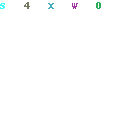 0
0 -
Looking great.
Legs of roman and italic /K/R/ may be just a touch too heavy.
I still don't like the diagonal slices in the cap rounds at all.
Serif on middle arm of /E/F/ may be extending down a little too far.
Would some kind of more interesting treatment of the apex of /A/ be appropriate for this face?
Your /G/s might be a bit too narrow.2 -
Yes, G too narrow, and possibly D also, though less so. These should harmonise better with width of O. Crossbar of A is too low.
Your italic b seems to me a good width relative to the roman, but many of the other italic letters are too wide in comparison.1 -
Agree w/ everything Craig and John say, except that your A looks fine to me.
C is also quite narrow. Italic lower case is much looser than the roman. The roman may be a bit tight for text; the ital may be a bit loose. But ital caps seem spaced quite tightly. The wordspace seems pretty wide throughout, in both roman & ital.
S might be just a smidge narrow in both roman and ital. Or not.
Terminal of the roman f might be a bit weak.
I still think this is a strong, striking, and original face. And I still think the ruler-straight diagonal cuts are sometimes destructive, and that you might consider adding a slight camber to them.1 -
Thanks for your replies, much appreciated.
Gave me lots to work on. I've not updated any of the italic capitals yet. Just postponing it till the roman capitals come closer to being locked. For the rest I've done a few revisions:
Craig,
I've reduced the the darkness of /K and /R's legs, also making them wider.
I'm open to redrawing the capitals without the diagonal slices if they continue not to work, just would like to see them through a little more. With this revision I bowed out the slices on the capitals more. Edging towards better or still jarring?
I've shortened the middle downward serif in /E and /F by 20/1000 points also making these glyphs wider.
Widened /G too.
About /A, I've started sketching up ideas for the apex. No goodies just yet.
John,
I've widened /D closer to /O, which I should say I also widened.
I raised the crossbar on /A by 10/1000 points, what do you think?
About the italic being wide compared to the roman, this I defiantly would like to address but I'm having a hard time spotting the wide glyphs, perhaps because you meant all were too wide except /b? Else, I ventured a guess and narrowed /o/s/m/r/z by circa 10-20/1000 points.
Max,
I've widened /C and /S, noting I also widened /O.
With the spacing on the roman, I added circa 10/1000 points to all side bearings and narrowed the word space by 30/1000.
With the spacing on the italic I took circa 10/1000 points from all the side bearings and narrowed the word space by 20/1000 too.
On the terminal of the roman /f I added a bit more weight.
I added more chamber to the diagonal cuts on all the roman capitals, and /b/q. Should I bow out the letters more?
Here is the latest PDF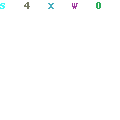 0
0 -
Looking great. Yes, the bowing of the diagonal slices makes them a little less jarring, and certainly at text sizes there's no problem at all with the slices.
I think roman /C/ and /G/ could still be wider. Top part might be a touch too dark as Alexis suggested earlier (see /S/ also).
Some other things to consider, but my eye may be off so use your own judgement:
Review your diagonal stems: roman /M/ and /N/ and italic /A/M/N/ may be too thick?
I may be seeing a little spottiness at the southwest of roman /b/ and northeast of roman /q/.
On italic /h/m/n/, it looks to my eye like the final baseline serif sits a touch high relative to the other parts of the letter on the baseline.
Is the corner on the top left of /a/'s bowl a bit too pointy?1 -
Better & better. Distinctive, with really strong personality, but not gimmicky or distracting. Cambering the cuts really makes this come together for me. I do not think you should remove the cuts from the UC; I think they're working now. Only a few of the cuts now seem excessive to me: lower left on roman o, lower left on loop of roman g.
G seems narrow and E seems wide in both roman & ital. C and S seem narrow in ital.
I think I agree w/ Craig about some cap diagonals being a trifle heavy. But not much.
Can't decide whether a leans to the right a bit. It may be just fine. Disagree w/ Craig about corner on a's bowl; I like it.
Roman d seems dark overall.
You may be overkerning a bit; some combinations like ve & rs seem spotty in text blocks.
Italic f seems quite loose; x seems tight.
Itals seem tight overall.
I still think the eye of the roman g is too big and too heavy. The eye and the loop seem to be crowding each other, making the letter dense and congested. The gg combinations in your text block jump out at me. I think you italic g's proportions are much more successful. It might be useful to take a look at Mendoza.
Really good work overall, I think.
1 -
Hi all,
posting an update that has been brewing for a while.
Most of the revision has been on the uppercase and side bearings. Wondering what do you think, anything worth revisiting?
Craig,
I've redone the cuts to add more outward bowing on the uppercase.
I've lightened the tops of /C/G/S and adjusted their proportions as you and Alexis suggested. I'm still not as confident with my uppercase as I am with my lowercase letters though, do you see anything that is still jarring?
I've also readjusted the weights of the diagonals in /M/N/V.
With the roman /a's bowl being too pointy at the top left, I tried to draw it without but I hope you don't mind if I leave it with, just for quirkiness' sake.
With the italic serif ends I lowered the non serifed ends by 4/1000, how does that look?
I worked on the spottiness of roman /b/q.
Max,
I've adjusted the proportions of /G/E/C/S on both the roman and italic, also adjusting the weight of the diagonals in the uppercase.
I've rounded out the jarring cuts in /o/g.
I'm not sure what to do with the leaning /a, but now that the spacing is whiter the lean maybe more or less visible?
I reworked the tapering of the /d, is it still too dark?
I had to postpone the kerning problems for now, but it is at the top of the todo for the next update.
With the italic, I also loosened the sidebearings as well as added space to /x and took from /f.
Roman /g has been giving me problems. I lightened the vertical apexes of the eye and loop, how is that?
Thanks again! Really appreciate your posts.
Link to PDF.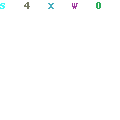 0
0 -
With the italic serif ends I lowered the non serifed ends by 4/1000, how does that look?
Maybe we failed to communicate--I meant the non serifed ends look too low and need to be raised. (They still do, I think.)
Good edits on those other letters. I think the chin of /G/ in both roman and especially italic could use a little strengthening.
To my eyes, in roman and italic both, your /m/ is a little too wide and your /x/ a little too narrow.
On the roman /g/, I think the weight adjustment is good but it still might be a little crowded between the bowls.1
Categories
- All Categories
- 46 Introductions
- 3.9K Typeface Design
- 487 Type Design Critiques
- 564 Type Design Software
- 1.1K Type Design Technique & Theory
- 656 Type Business
- 861 Font Technology
- 29 Punchcutting
- 520 Typography
- 119 Type Education
- 324 Type History
- 77 Type Resources
- 112 Lettering and Calligraphy
- 33 Lettering Critiques
- 79 Lettering Technique & Theory
- 559 Announcements
- 94 Events
- 114 Job Postings
- 170 Type Releases
- 180 Miscellaneous News
- 276 About TypeDrawers
- 54 TypeDrawers Announcements
- 120 Suggestions and Bug Reports






